I went out to do some photography with Bob Bear on Canada Day, July 1. We were eager to go, since we hadn’t been out locally since winter. We were fortunate to have a pleasant summer day, after enduring long bouts of rain throughout the month of June.
Our first stop was the Rundle Forebay Reservoir, the town’s water storage basin, located just south of Canmore. This view, facing northwest was chosen to capture the reflection of the day’s cloud cover on the water’s surface.
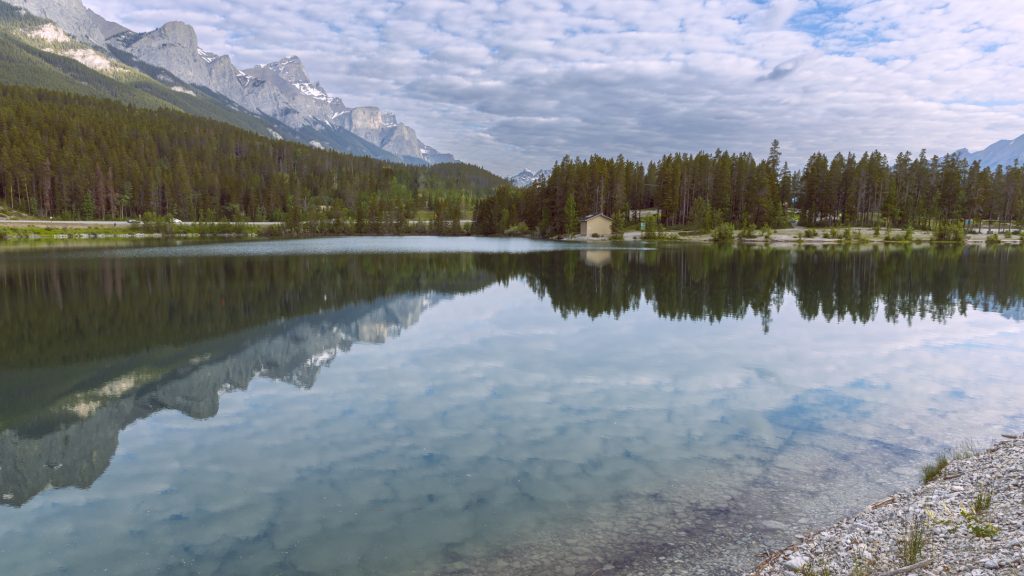
Turning further southward, I took this black and white version of the reservoir, facing the gap between Mount Rundle on the left and the East End of Rundle (EEOR) to the right.
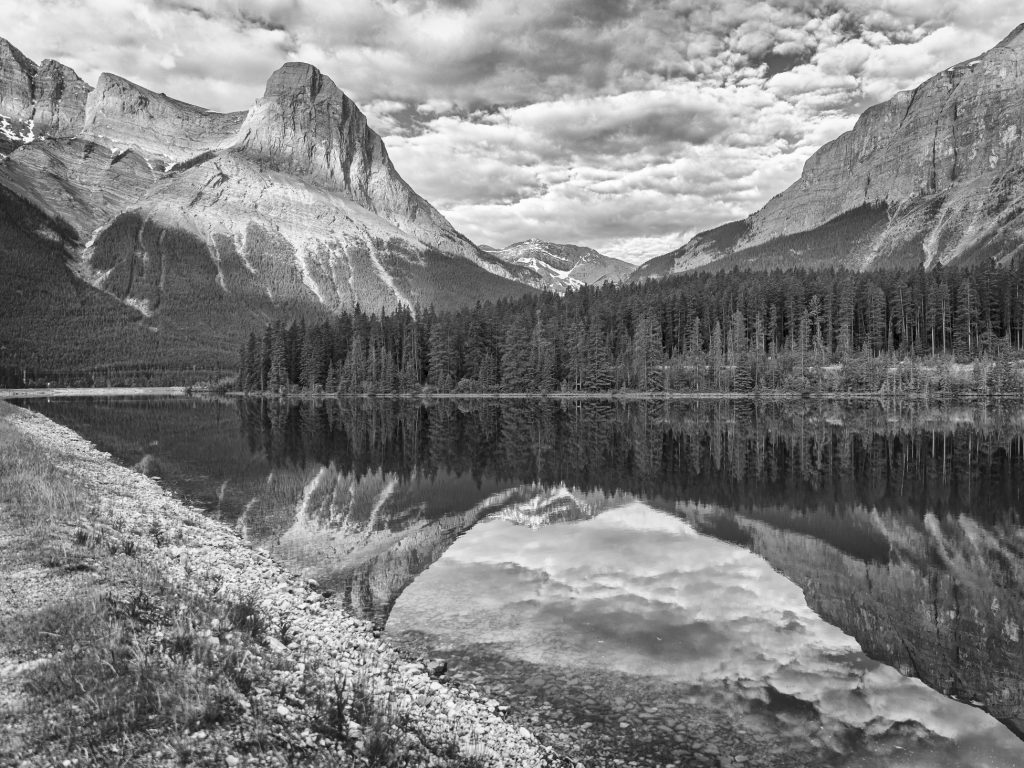
This final scene was taken from the same location, but facing southeast. The eye follows the service road to the Ehagay Nakoda Massif, a collection of five peaks bordering the southside of Canmore. From right to left are Ha Ling Peak, Miner’s Peak, Mount Lawrence Grassi, the Canmore Wall and Ship’s Prow.
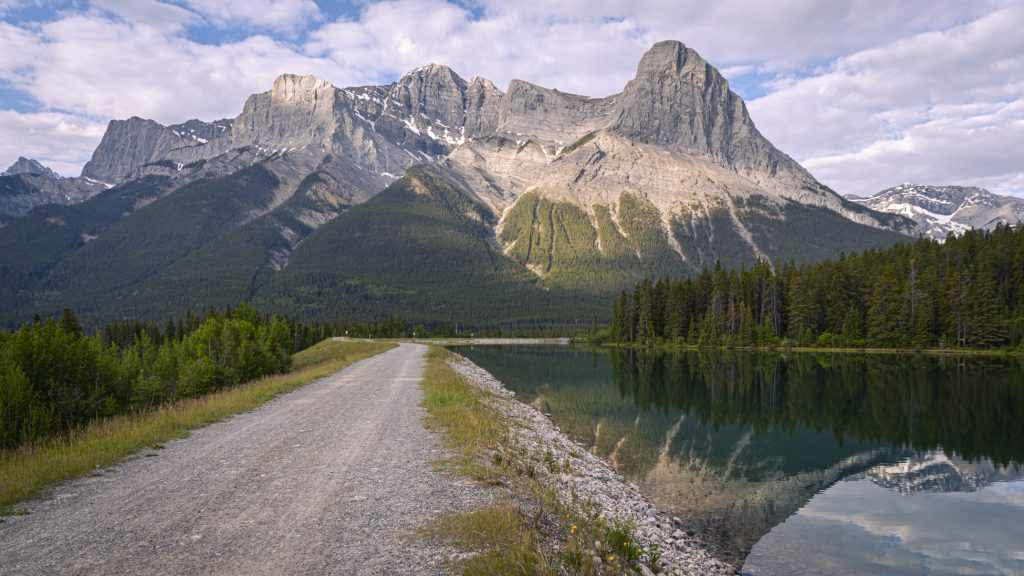
When we began to lose the early morning light, we chose to move on. Our next destination doesn’t really have a name, so I’ll describe it’s location and unique nature. It is situated about 32 km (20 miles) east of Canmore, at the junction of Highway 1A and the Yamnuska Ridge Trailhead.
The area can best be described as marshy and populated by a host of the stumps of trees, which presumably perished when this low-lying area became indundated. This is a view of the marsh area in front of Yamnuska Ridge.
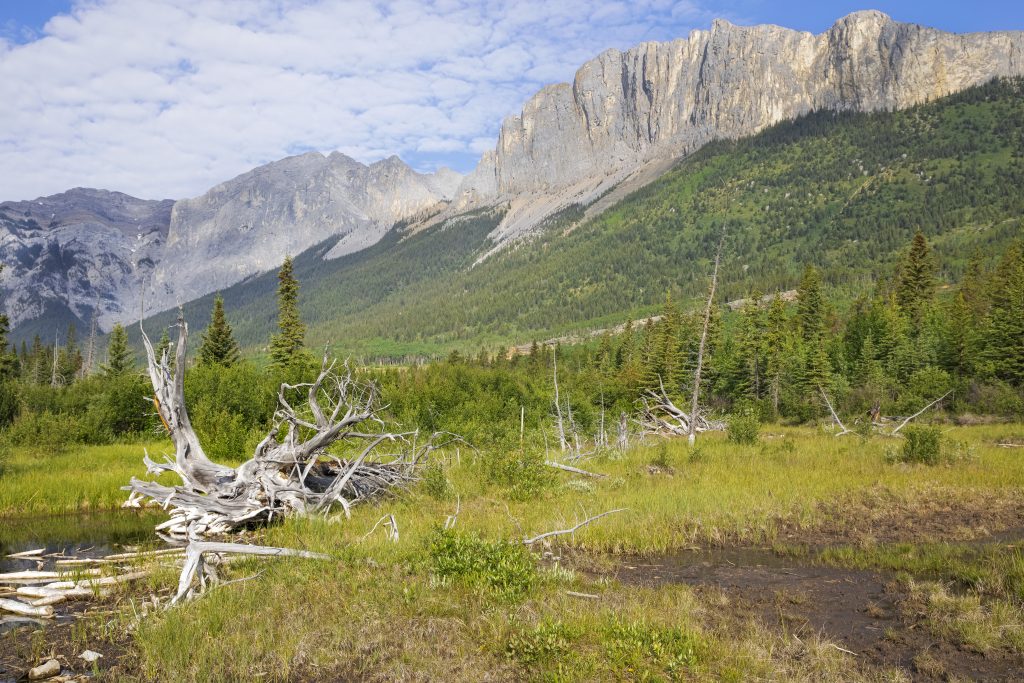
So why would we go there? There is a marvellous array of stumps in the area, many in of them in a large pond. Their appeal lies in their many shapes and sizes, the texture of the wood and their reflections in the water of the pond. As demonstrated in the previous photograph, a stump can be included in a broader scene to provide interest and balance.
More often, we’ll focus on a chosen subject, such as the stump in the picture below and attempt to portray it in an artistic way. I created a low key image of this stump, that is …”photographs that are underlit images featuring dramatic contrast and dark colors.” There need not be colours in the image; I’ve done this one in black and white. Notice how the light areas of the stump and the light sky are visible in the reflection.
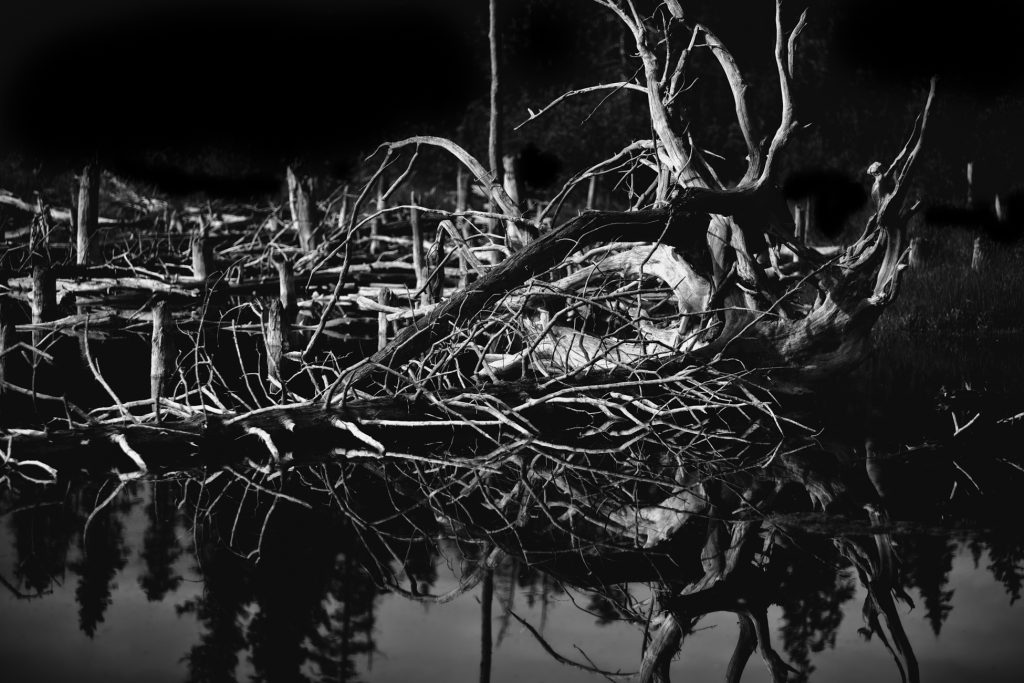
The opposite of a low key image is a high key image (no surprise there).The reflected stump in the following picture is underlit with minimal shadowing that helps to shape the subject. Much more of the stump’s reflection is visible, as compared to that in the previous photograph.
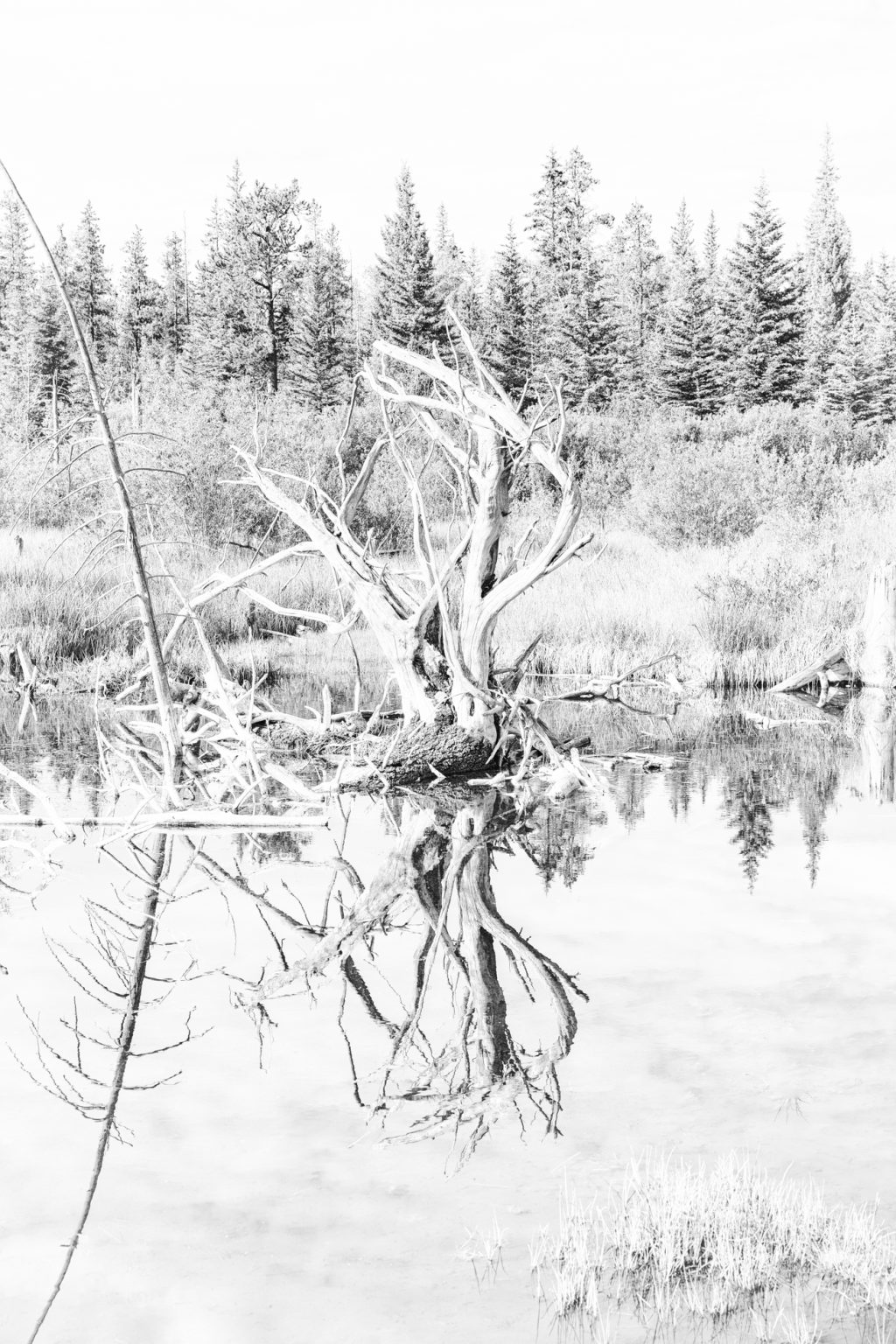
All in all, it was a good day. We’re looking forward to many more as the summer progresses.
